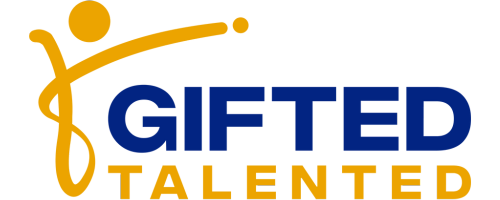
California Gifted Education: A Complete Guide to Programs, Schools, and Admissions
A parent-friendly guide to understanding California’s gifted education system, including GATE programs, private schools, and admissions pathways.
[All Ages 🌟] • [Intelligence 🧠] • [Schools 🚌] • [Nurture 🌱] • [Insights 📊]
California has long stood at the forefront of educational innovation, and its approach to gifted and talented education (GATE) is no exception. From pioneering policies in the 1960s to today's emphasis on equity and local control, the state has developed one of the most diverse and expansive gifted education systems in the United States.
Historical Evolution of GATE in California
1961: California launched the Mentally Gifted Minor (MGM) Program, identifying students with IQs in the 98th percentile or above.
1980: Assembly Bill 1040 broadened the definition of giftedness, adopting federal criteria and recognizing talents beyond intellectual ability, such as creativity, leadership, and artistic performance.
2000: AB 2313 mandated differentiated instruction within the regular school day and introduced state funding formulas for GATE.
2014: The shift to the Local Control Funding Formula (LCFF) dissolved categorical GATE funding, giving districts full autonomy to develop, implement, and fund their own GATE programs.
Current GATE Policies and Practices
Definition of Giftedness
California defines a gifted and talented pupil as one who shows or demonstrates the potential for high performance capability in areas including, but not limited to:
- Intellectual ability
- Specific academic achievement
- Creative ability
- Leadership ability
- Visual and performing arts talent
- High achievement
This broad definition allows districts to tailor identification to their local populations and equity goals.
Identification Criteria
Each district in California designs its own identification procedures, often relying on a multi-measure approach:
- Cognitive and Achievement Testing: Tools like the CogAT, MAP, and SBAC (typically 85th percentile or higher).
- Qualitative Factors: Teacher and parent nominations, classroom observations, student portfolios, and leadership behavior.
- Equity Safeguards: To prevent bias, many districts exclude privately obtained assessments and instead use district-administered tools.
Program Models in Public Schools
California public schools offer several delivery models for GATE:
- Cluster Grouping: GATE students are grouped within general education classes and receive differentiated instruction (e.g., Oak Park USD, Magnolia SD).
- Accelerated Pathways: Access to honors, AP, and dual-enrollment college courses (e.g., LACES).
- Specialized Schools & Magnets: LAUSD’s Gifted Magnets and Schools for Advanced Studies (SAS) offer highly rigorous, interdisciplinary programs for eligible students.
Notable Public Gifted Programs and Schools
| School/Program | Grades | Location | Highlights |
|---|---|---|---|
| California Academy of Mathematics & Science (CAMS) | 9–12 | Long Beach | Elite STEM magnet with rigorous academics. |
| North Hollywood Highly Gifted Magnet | 9–12 | LAUSD | For students scoring in the 99.5–99.9 percentile. |
| Portola Highly Gifted Magnet | 6–8 | Tarzana (LAUSD) | Middle school for highly gifted students. |
| Whitney High School | 7–12 | Cerritos | Public magnet with competitive academics. |
| Eagle Rock Jr./Sr. High School | 7–12 | LAUSD | Offers IB and gifted magnet options. |
| Walter Reed Middle School (IHP) | 6–8 | North Hollywood | Specialized individual honors program. |
Notable Private and Independent Gifted Schools
| School | Grades | Location | Features |
| The Nueva School | PreK–12 | Hillsborough | Project-based, SEL, for gifted students. |
| Mirman School | K–8 | Los Angeles | For highly gifted, inquiry-driven. |
| Helios School | K–8 | Sunnyvale | Outdoor learning, hands-on curriculum. |
| Oak Crest Academy | PreK–12 | Multiple Sites | Low student-teacher ratios, hands-on enrichment. |
| GATE Academy | K–8 | Marin County | Accelerated, inquiry-based learning. |
| Knox School | K–8 | Santa Barbara | Challenging and nurturing environment. |
| Sierra Canyon School | PK–12 | Chatsworth | Offers advanced curriculum and enrichment. |
Admissions and Selection Processes
Public Programs:
- Nomination: From teachers, parents, or school staff.
- Assessment: Standardized tests, behavioral checklists, and portfolios.
- Eligibility Verification: Often includes percentile thresholds (e.g., 85%+ for general GATE, 99.5%+ for Highly Gifted Magnets).
- Application & Selection: Via platforms like LAUSD’s CHOICES system and school-specific timelines.
Private Schools:
- Application: Includes academic records and forms.
- Interviews and Observations: Assess fit and aptitude.
- Selection: Based on mission alignment, cognitive/creative profiles, and learning styles.
Challenges and Opportunities
Equity and Access
Despite expanded definitions, gifted programs still face underrepresentation of:
- Low-income students
- English learners
- Racial/ethnic minorities
Districts are increasingly piloting universal screening, revising referral systems, and training teachers on culturally responsive identification.
Lack of Statewide Oversight
There is no statewide dashboard tracking GATE outcomes. This hinders data transparency and accountability. Advocacy groups such as the California Association for the Gifted (CAG) are lobbying for reinstating state guidance.
Professional Development Gaps
Teacher preparedness varies widely. Organizations like CAG and SENG offer ongoing training, especially on:
- Differentiated instruction
- Social-emotional needs of gifted learners
California Strengths & Weaknesses
California's GATE system demonstrates both significant strengths and notable gaps:
Areas of Strength:
- Intellectual: Most GATE programs focus on high academic ability. California leads with rigorous programs, such as Highly Gifted Magnets and STEM-focused schools.
- Artistic: The state offers strong support for performing and visual arts giftedness through magnets, auditions, and private institutions.
- Digital: Programs increasingly include computational thinking, robotics, and software engineering (e.g., CAMS, STEM Magnets).
Areas Needing Growth:
- Entrepreneurial: Despite being a global hub of innovation, California's GATE programs rarely include entrepreneurial thinking or innovation-building.
- Humanitarian: Programs for service, advocacy, and civic responsibility are not emphasized.
- Social: While SEL is growing, social giftedness (e.g., empathy, collaboration) is still overlooked in identification.
- Leadership: Recognized in policy but inconsistently developed in programming or support.
- Physical: Physical talents, such as athleticism or kinesthetic intelligence, are rarely included in GATE identification or curriculum.
This analysis suggests that while California has a solid infrastructure for academic and arts-based giftedness, broader talents in leadership, innovation, and humanitarianism remain underdeveloped.
The Road Ahead: Future Directions
- Universal Screening: Districts like LAUSD are leading the charge.
- Project-Based Learning: Curriculum design increasingly integrates real-world challenges, STEM, and the arts.
- Policy Reform: Advocacy for reinstating state-level definitions and mandatory identification.
- Expanded LEADSHIP Domains: Policymakers and educators are encouraged to design programs that reflect the full diversity of gifts across the LEADSHIP spectrum.
Conclusion
California’s gifted and talented education landscape reflects a nuanced balance between local autonomy and statewide aspirations. With a broad definition of giftedness, multiple identification pathways, and an array of program models, the state provides many access points for high-ability learners. Still, equity, consistency, and support remain key frontiers. As thought leaders, families, and educators continue to push for reform and innovation, California’s model will likely remain a reference point nationwide for the evolution of inclusive, future-ready gifted education.
Resources for Families
Gifted Talented Families
A global village for families turning spark into significance








